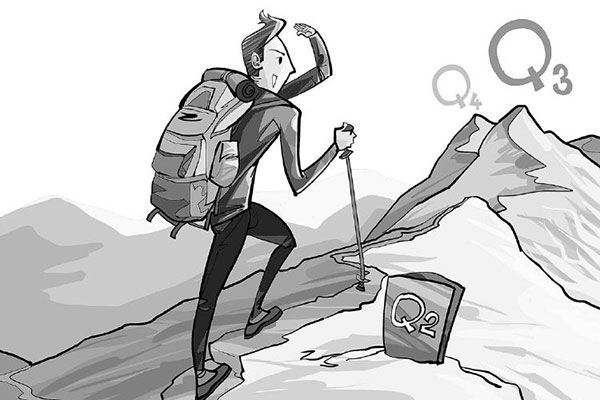Indicators point to cautious optimism, but funds from stock market may flow to property
 |
|
Zhang Chengliang / China Daily |
An analysis of China's latest economic data can well justify cautious optimism about the future.
Above all, the Chinese economy remains resilient, despite its apparent slowdown when compared with a few years ago.
Three aspects reinforce this resilience.
First, employment remains robust. In the first half of the year, China created 7.18 million jobs, accounting for 71.8 percent of the government's annual target. This showed that the slowdown in economic growth didn't shake the foundation of the labor market. The stability in the job market means the economic slowdown is under control.
Second, the average disposable income of residents amounted to 10,931 yuan ($1,760) in the first half of the year, an increase of 7.6 percent in real terms, very close to last year's 8 percent. This shows that income growth surpassed economic growth and remains robust. Increasing residents' incomes can boost consumer confidence and lay a solid foundation for future consumption, a crucial economic engine.
The third positive sign is the continued improvement in economic restructuring. The service industry's weight in GDP rose to an all-time high of 49.5 percent, while energy use per unit of GDP decreased further in the first half, with clean energy consumption accounting for 17.1 percent of the total, and rising by 1.6 percentage points. These figures indicate that the goal of trading economic growth for quality has worked, which bodes well for sustainability.
However, there are still a lot of voices questioning the momentum of China's GDP growth. One view that is popular in the international community is that China's second-quarter GDP was bolstered mostly by an active stock market. Now that investors will take a cautious approach toward investing in stocks, which will result in a cooler market, challenges for the Chinese economy in the second half of the year are even bigger. There were reports claiming that China's second-quarter GDP would have grown only 6 percent if the securities industry's contribution were deducted.
To be fair, this view has some basis, with the financial industry being indeed the largest contributor to economic growth in the first half of the year. According to the National Bureau of Statistics, growth of the industry hit 17.4 percent, compared with 10.2 percent in 2014. In particular, revenue in the securities sector grew 400 percent in the first six months of the year, boosting the country's GDP.
Although the contribution of the stock market to the economy was significant in the second quarter, it is too premature to conclude that a less active stock market would herald slower economic growth.
Capital is fluid. Once the stock market cools down, capital will flow to other industries such as the property market. Even if capital flows back to banks as deposits, it will ultimately go to industries in the form of bank loans. Therefore, a large part of the negative effect of a slow stock market is likely to be offset by an upside in other industries. The migration of capital from shares to property surfaced in June, with the number of transactions and the average property price both witnessing an upward trend. In this sense, the stock market's loss can be other markets' gain, so there is no need to worry about a slackening securities industry.
Putting the financial industry aside, the "real economy" industries-manufacturing and service industries alike-have shown signs of bottoming out by the end of the second quarter. They offer the biggest hope for the second half.
